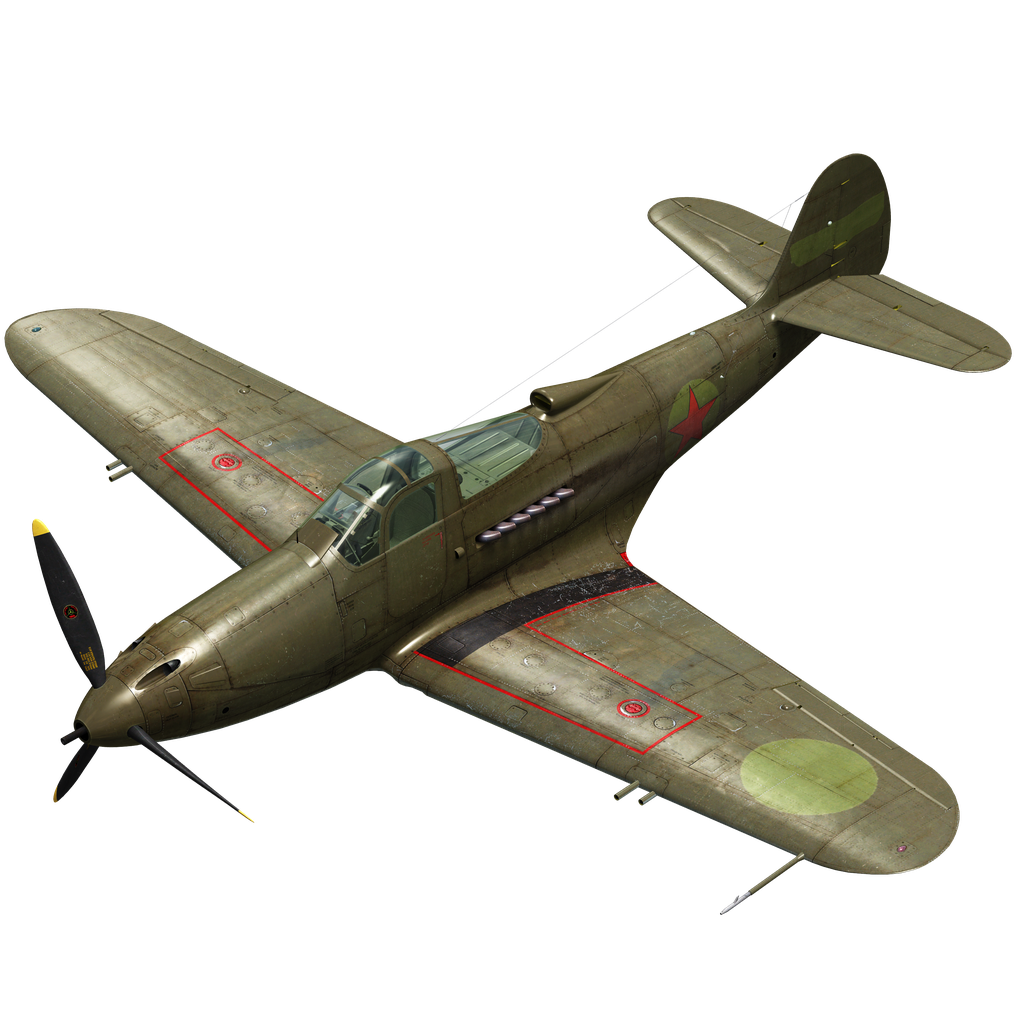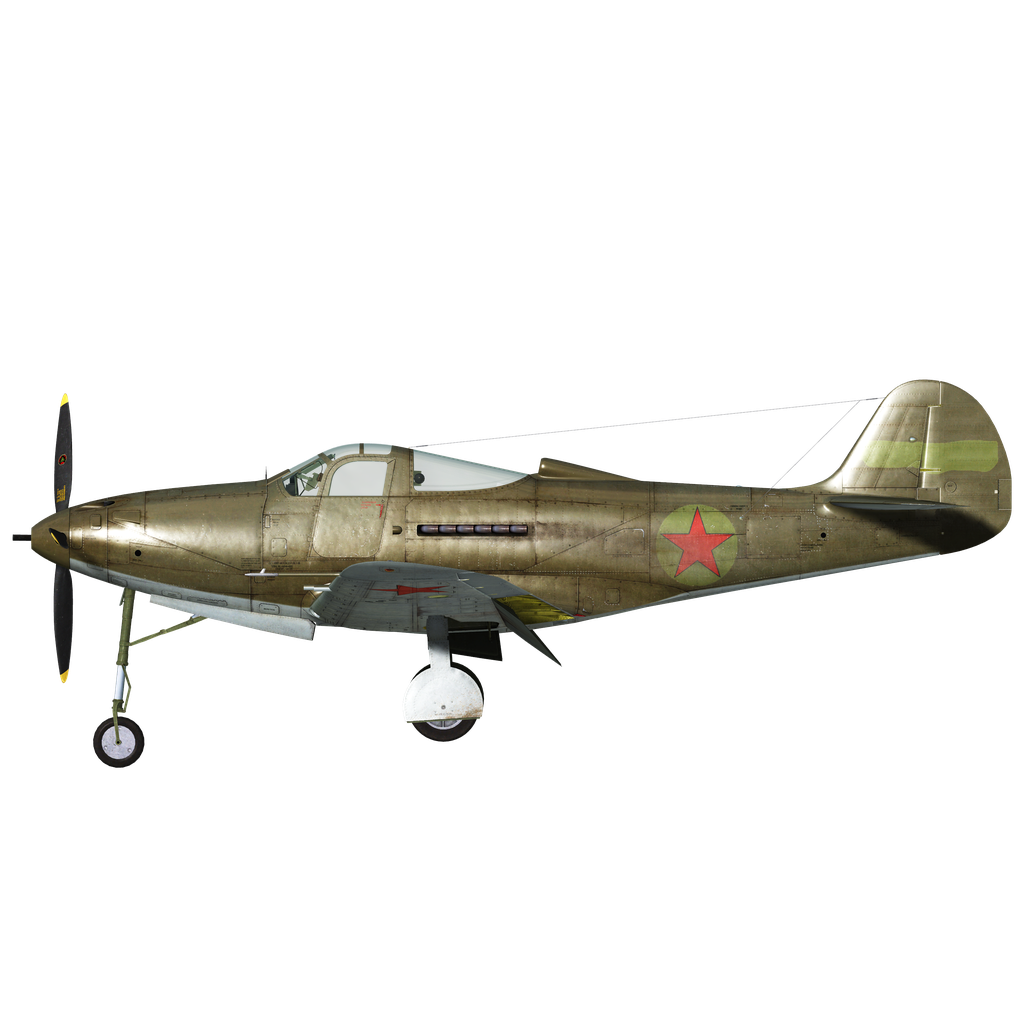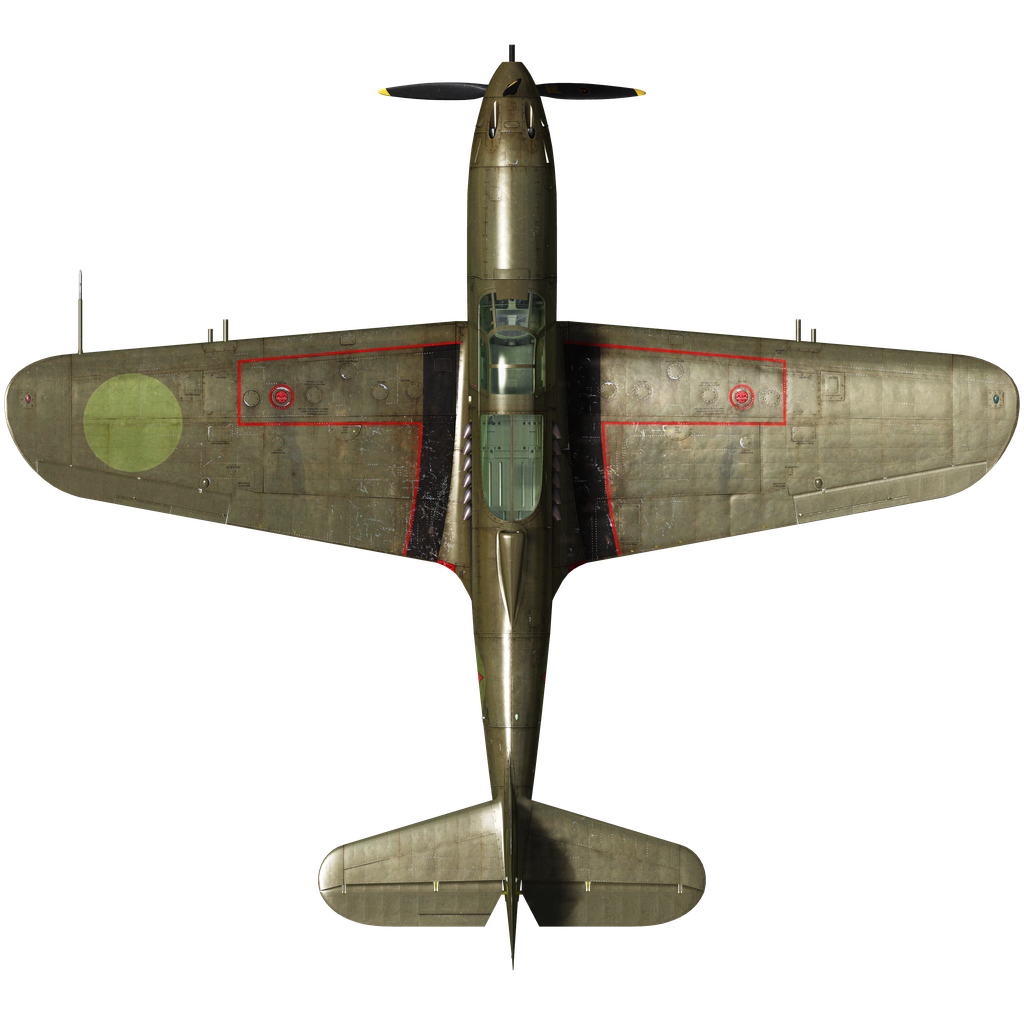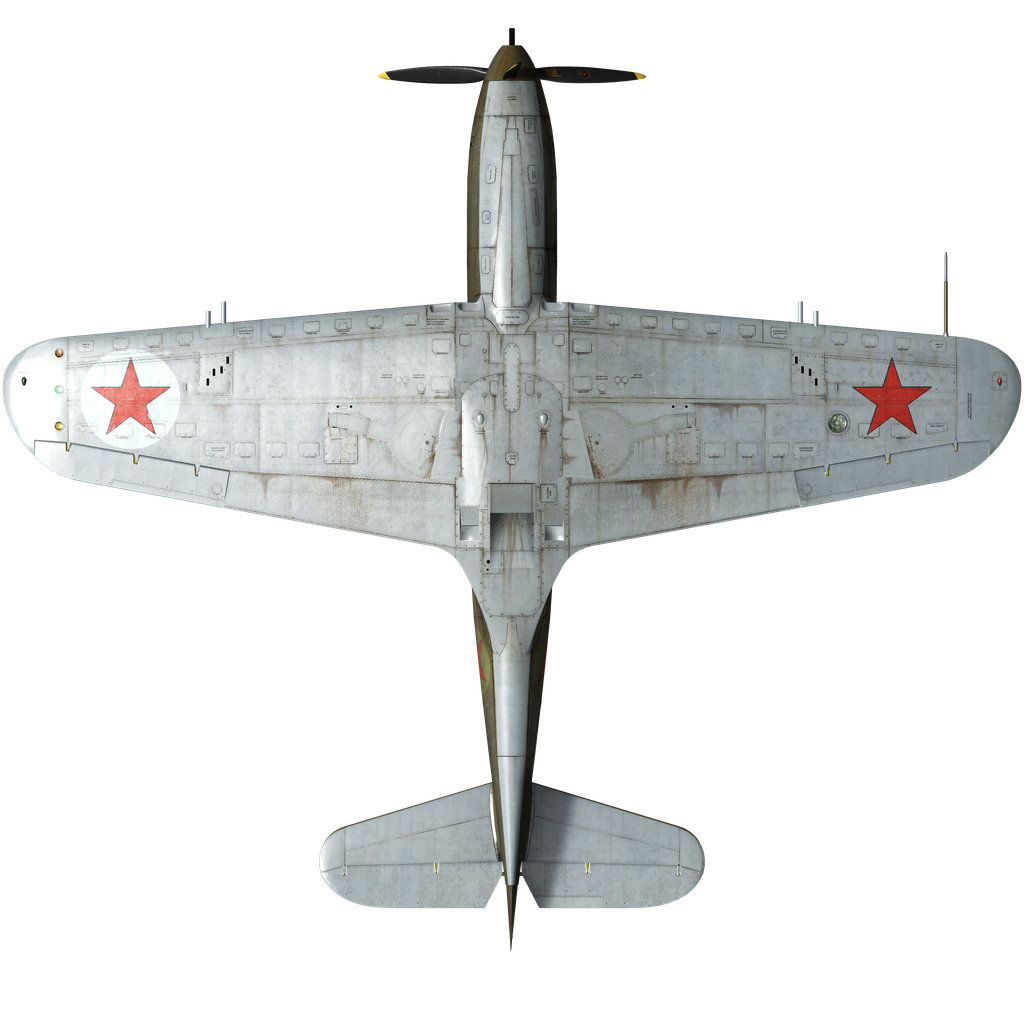The most famous American Lend-Lease fighter began development in 1936 as a platform for a powerful 37 mm cannon. Bell later argued that the Airacobra concept was based on three main principles: providing firepower, ease of landing and movement on the ground, and excellent visibility for the pilot. To install powerful weaponry, it was necessary to free up space in the forward section of the fuselage, resulting in a unique aircraft design with the engine located behind the cockpit and its rotation transmitted to the propeller by a long shaft running under the cabin floor.
The project was finally approved in 1938 and the first flight of the prototype took place in April 1939. The experimental, still unarmed aircraft reached a speed of 628 km/h and, as it turned out, had many advantages as well as disadvantages. It had high maneuverability due to the location of the engine near the center of mass and high speed. Thanks to the design of the cockpit and its placement closer to the nose, visibility was excellent. The aircraft proved to be very durable and resisted damage well (except for the tail in the first series of the aircraft). During maintenance, the design of the Airacobra allowed easy access to all parts of the plane, which simplified the work of the technical staff. On the other hand, the plane proved to be very difficult to fly and tended to stall into a flat spin. When bailing out, the pilot could collide with the tail of the aircraft. The Allison engine was installed without a turbocharger, which caused the P-39's performance to deteriorate sharply at high altitudes.
The P-39L-1 was a single-seat, single-engine, all-metal, low-wing cantilever monoplane with a tricycle landing gear and nose wheel. The forward section of the fuselage housed the weapons, the forward gear stowage, and the cockpit. The engine was located behind the cockpit; rotation from the engine to the propeller was transmitted by a 3 m-long shaft. The P-39L-1 differed from the previous series by the installation of an Allison V-1710-63 engine, which developed a takeoff power of 1325 hp.
The pilot's cockpit had a very convenient arrangement of instruments and controls. Entry was through the right cabin door. The left door was not used — the engine control column was on the left side and hindered movement. However, the left door had to be jettisoned in case of an emergency exit from the plane. The pilot was protected in front and behind by bulletproof glass and armor.
These planes were equipped with a nose landing gear with a reinforced fork, which allowed steering at high speeds. To facilitate winter operation, a heating well with an electric heater powered by a ground source was provided in the oil tank. In the left front window of the canopy, a small opening was made through which the pilot could scrape ice from the visor with his hand. The aircraft's armament consisted of a 37 mm cannon in the nose, firing through the hollow propeller shaft, and two synchronized heavy machine guns. Four rifle-caliber machine guns were mounted in the wins. A total of 239 P-39L-1s were built.
In Western Allied aviation, the Airacobra had a bad reputation due to the insufficient altitude of its engine, but on the Soviet-German front, the aircraft's high speed and maneuverability at medium and low altitudes were in demand, where Soviet fighters mainly operated. The most successful Soviet aces flew the P-39: Alexander Pokryshkin, Grigory Rechkalov, Alexander Klubov, Nikolai Gulaev, and the brothers Dmitri and Boris Glinka. In his memoirs, Pokryshkin called the Airacobra his favorite plane because forty-eight of the fifty-nine planes he shot down were in American fighters. To improve the characteristics of the aircraft in the USSR, the wing machine guns were often removed and additional weight was placed in the nose to compensate for excessive rearward tilt. Nearly half of all aircraft produced (4920 units) were delivered to the USSR under Lend-Lease.
Used sources:
1. “American Warplanes of World War II” by David Donald, 1995
2. V. Kotelnikov “Airacobra”. American fighter for Stalin's falcons" 2009
3. Materials from the site airwar.ru






